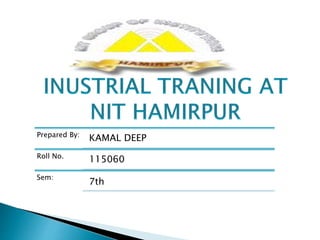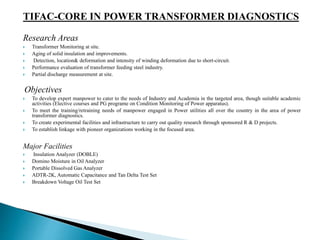This document discusses power transformer diagnostics and condition monitoring. It provides background on TIFAC CORE (Technology Information Forecasting and Assessment Council Centre of Relevance and Excellence) and describes the research areas, objectives, and major facilities of the NIT Hamirpur TIFAC-CORE center in power transformer diagnostics. Some key statistics on transformer failures are presented, such as 41% being due to on-load tap changers. The document also provides information on transformer health indices and factors that impact breakdown voltages in gases.






























